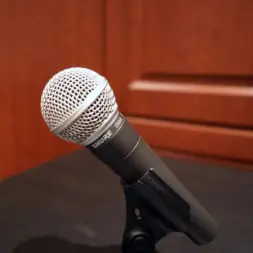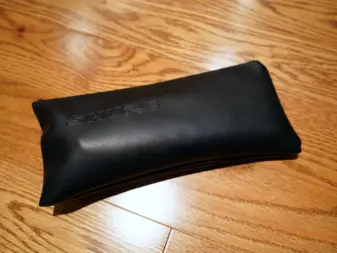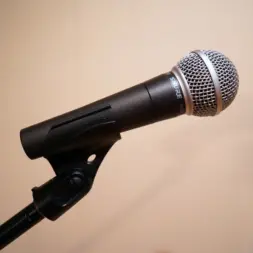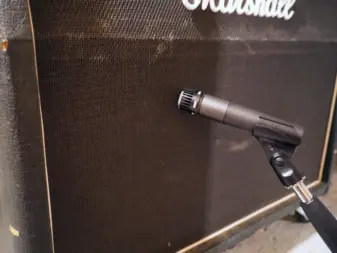
The amount of use the legendary Shure SM58 and SM57 microphones get is astounding. As Shure’s website states: “the words and lyrics of rock stars, pop idols, comedians, presidents, and Popes have passed through the 58’s grille for generations.” The 57, on the other hand, has recorded and captured countless guitarists, drummers, and other instrumentalists on the most famous of tracks.
Both these microphones are used for different purposes in studios around the world, thanks to a design difference that will be discussed a bit later in this article. Read on to find out if one or both of these mics can help you reach your goals.
First of all, make sure to view this video review that details the similarities and differences between both mics and the typical use cases of each.
Shure SM58 vocal microphone features

The SM58 is a dynamic microphone tailored for vocals. This type of design works without any current (phantom power) and is very reliable and durable. The frequency response features a bass roll off to provide clarity. These frequencies are usually reduced by sound technicians anyway to reduce muddiness. The mid-range is also brightened to accentuate the most important band of the human voice.
This mic has a cardioid pickup pattern. This means that it only picks up the sound that’s coming directly at it and not from the back or sides. This makes it very resistant to feedback in live applications, especially with floor monitors. A singer can perform in front of a wedge and crank up the volume to contend with a loud band without fear of feedback.
The built-in shock mount system provides quiet manipulation. This makes it an excellent choice for handheld applications as unwanted handling noises will be greatly reduced. It comes with a storage pouch and a holder to install it on common stands.
Shure SM57 studio instrument microphone

The SM57 is also a dynamic microphone, but it was designed for capturing the sound of instruments. It can handle high SPLs (sound pressure levels). This has made it into a go-to for electric guitar amplifiers, drums (especially snares), and loud brass and woodwind instruments like trumpets and saxophones. It’s clean and clear tone has also made it a popular choice for acoustic instruments like guitars.
Like the 58, it also has a cardioid pattern to help isolate the main source from background noise. This is especially handy for live applications where you could have multiple loud amps or drums working together. The tonal characteristics of this mic also provide some presence. This helps the source it is picking up to cut through the mix more clearly.
The SM57 model also comes with a storage pouch and a holder to install it on common stands.
Shure SM57 and SM58 sound quality

Both the SM58 and SM57 have the same cartridge design, but they still manage to sound different. The former was intended to be used as a handheld or supported vocal microphone, while the SM57 was created for instrument applications. The difference in tone is actually attributed to the grille.
The ball screen of the 58 has some volume to it and has a built-in pop filter. This helps reduce the plosives—impactful consonants (such as “P” s and “D”s) that are loudly accentuated by microphones that aren’t isolated by a pop filter. As an instrument mic, the 57 doesn’t require the pop filter and the grille is actually built into the cartridge.
This different design inherently provides a sonic difference between both models; the 57 has more output at 5 kHz and higher. Additionally, a more pronounced proximity effect is achievable on the 57. This phenomenon occurs naturally when bringing microphones closer to the source. The low frequencies hit the front and the back of the membrane and add up more the closer you get. You can use this to your advantage and tailor the sound directly at the source.
Durable design
One of the best features of both microphones is how durable they are. The SM58 and SM57 are absolute tanks and will sustain decades of abuse. For example, the ones I own have been with me for over a decade but I’ve been in contact with some that have been in constant, almost daily, service for 30 years plus without major damage. This adds immense value to your investment. Shure also offers many replacement parts if ever you manage to break one.

Who are the SM57 and SM58 mics for?
For vocalists and live sound technicians, purchasing one, or a few SM58s, is an excellent idea. You can use them as main vocal microphones or have some extras to accommodate backup singers and extra speakers. The grill is very easy to clean and the included carrying pouches make them convenient to bring along.
I’ve also seen the SM58 used in some very popular podcasts. They definitely work, but there are better suited products for podcasting, such as Shure’s SM7B, a legendary model in its own right.

For instrumentalists, producers, and studio sound technicians, one, or multiple SM57s, is very commonplace. Guitar tones are usually associated with this model and you’ll instantly get a recognizable, satisfying tone. The same goes for snare drums, and for any live instrument sound too. You can even experiment with this model for vocalists, putting that proximity effect to good use. There are many famous recordings where the main singer performed into one of these, contrary to regular application.
Purchasing either, both, or multiple copies of both the Shure recording microphones is an excellent investment. If you intend on capturing live vocals or live and studio instruments, there aren’t a lot of reasons not to purchase these affordable products.
Make sure to check out the Shure SM58 and Shure SM57 on Best Buy’s website.



